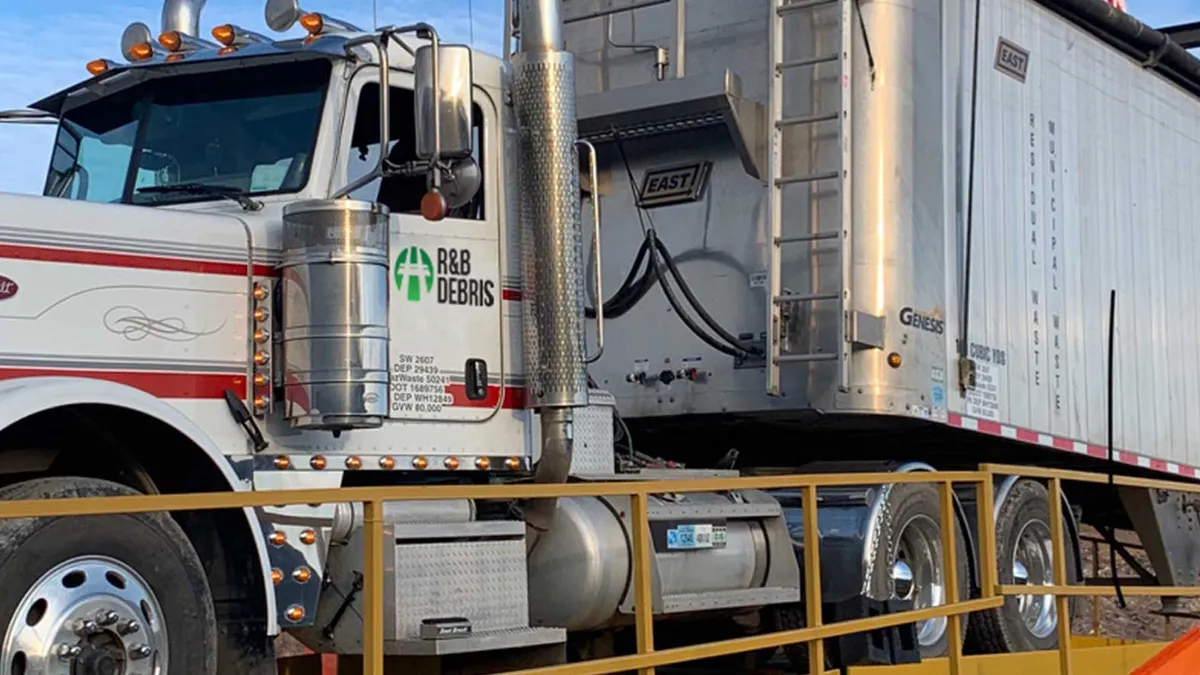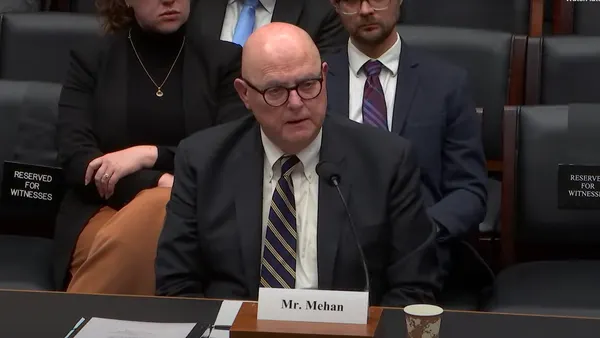As C&D disposal capacity tightens in the Northeast, the latest company to receive investment for rail transfer plans sees ample room to grow.
Last month, New Jersey-based Hainesport Transportation Group announced a minority recapitalization deal led by Tecum Capital, along with Comerica Bank and Environmental Services Investors. HTG intends to use this capital to expand its vertically integrated operation, with the potential for new or expanded transfer and disposal facilities.
HTG’s existing portfolio includes the rail-served Creekside C&D Landfill in Ohio, the HIRR rail transfer station in New Jersey, a federally chartered short rail line, a rail transload facility in Ohio, an “asset light” disposal and truck logistics business and the Champion Disposal roll-off hauling operation.
CEO Darryl Caplan, who founded the business with fellow rail industry veterans Todd Sage and Ron Bridges in 2004, said the concept has been many years in the making.
“Pretty early on, we had this vision that airspace [on the] East Coast was disappearing, pricing was going to continue to rise and that waste had to go a much further distance for disposal,” said Caplan. “It doesn't happen overnight, it's gradual. As facilities become more and more full, pricing goes up” and it becomes more economically viable to export waste by rail.
As part of this plan, the company developed the rail-served HIRR transfer facility in Hainesport, New Jersey, to manage an estimated 1,000 tons per day with 160 rail cars. In addition to its Creekside site, HTG also ships third-party volumes to other disposal locations via rail and truck.
“I think the value that is embedded in HTG is the front end of the hub here with the transfer,” said ESI founder Dickson Suit. He added that disposal is also an important piece of the strategy.
The investment with Tecum marked the first independent sponsor deal for Suit, who has a long track record in the industry, including time at Ironwood Capital. According to a release, Suit said he specifically sought out Tecum for his first deal based on a successful relationship in the past. Suit joined HTG’s board as part of the transaction and is working closely with Caplan on strategy.
A parallel part of the company’s initial growth was developing the R&B Debris business, which facilitates disposal for transfer station operators. This started with a particular focus on customers in the New York City market.
“The concept was we wanted to lock up those waste streams by truck, so that when the price point got to the place that we could convert the stream from by-truck to by-rail that we already had the customer, and we already knew the price point,” said Caplan.
R&B has since scaled to service clients around the tri-state area, as well as parts of Pennsylvania.
“It has grown its customer relationship steadily over the years, has scale, and is poised for future growth, which we believe to be exciting,” said Suit.
Looking ahead, with destinations such as New York’s Brookhaven Landfill set to close on Long Island soon (which takes an estimated 720,000 tons of C&D per year), HTG saw opportunities to further grow this model.
In 2021, the company acquired the rail-served Creekside site in Toledo, Ohio. The landfill now takes an estimated 300,000 tons per year, about half of which comes from the HIRR transfer facility.
While Creekside currently has an estimated six to seven years left of capacity, HTG sees the potential to expand it by acquiring adjacent land. The company is also working to convert a traditional landfill in Michigan to a rail-served site, at an unspecified location, with plans to begin operating in Q1.
HTG’s strategy parallels efforts by other companies to invest in rail-served disposal sites in states such as Ohio and Alabama, among others. Amid this competition, HTG still sees opportunities to further expand its transfer and disposal network via acquisitions or other means. “There’s assets that can be bought, and I believe there's opportunities that can be developed,” said Caplan.
HTG also intends to expand the footprint of its Champion roll-off business, which will help create more connections between a planned transfer station network that is likely to grow beyond New Jersey. In addition to the pending Brookhaven closure, C&D disposal options in New England are also increasingly limited and HTG doesn’t see any sign of the trend reversing course.
“The price of disposal is skyrocketing for C&D. It's not going away. It has to go somewhere,” said Caplan. “It's our thesis it's going to go by rail.”










